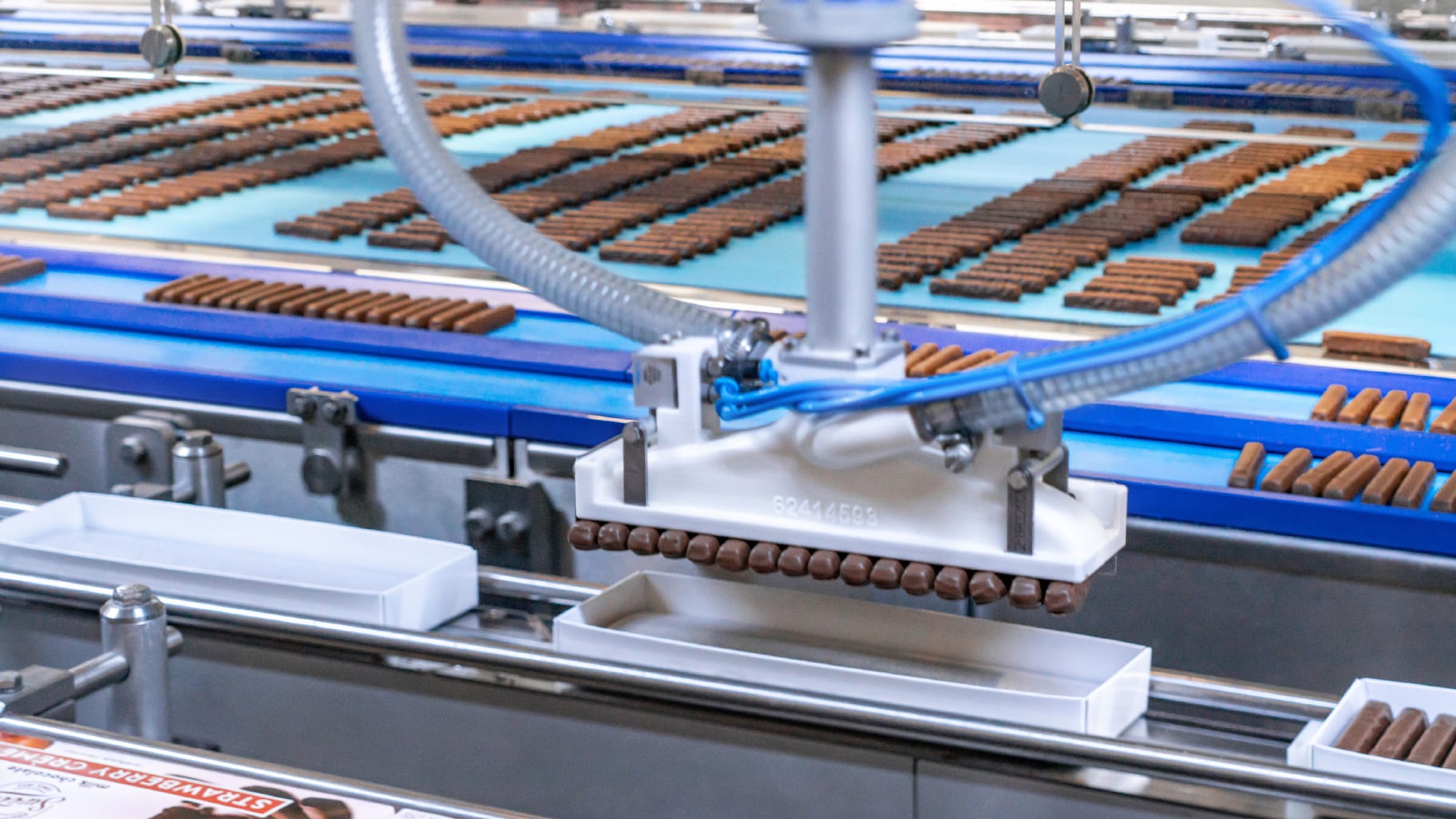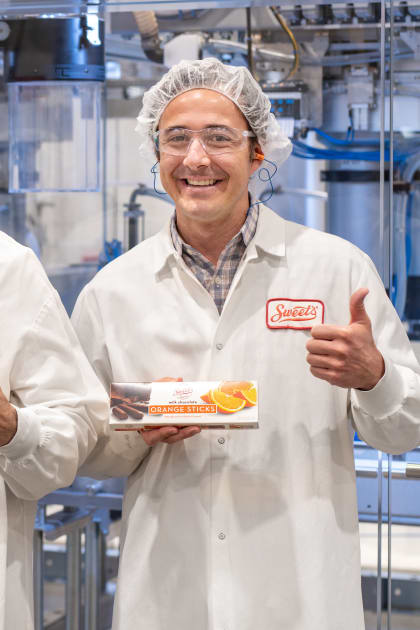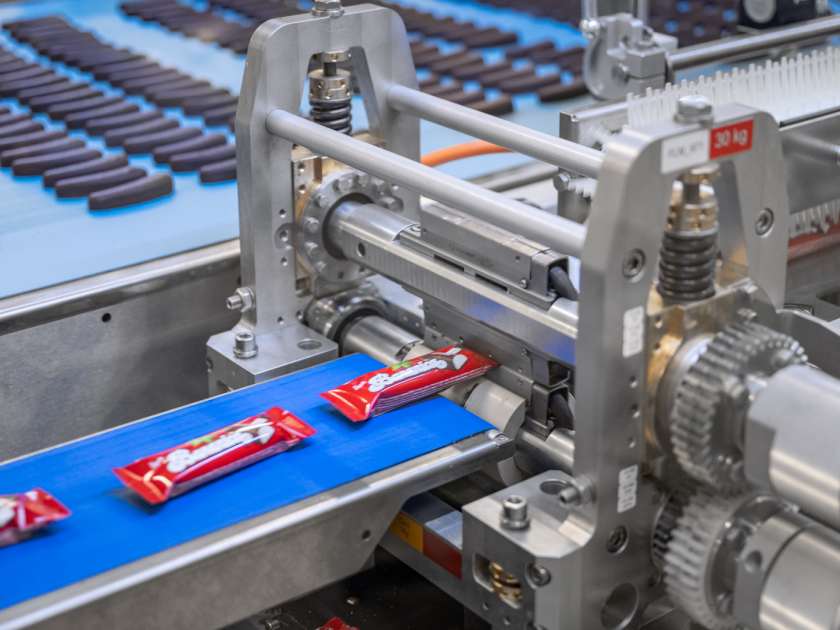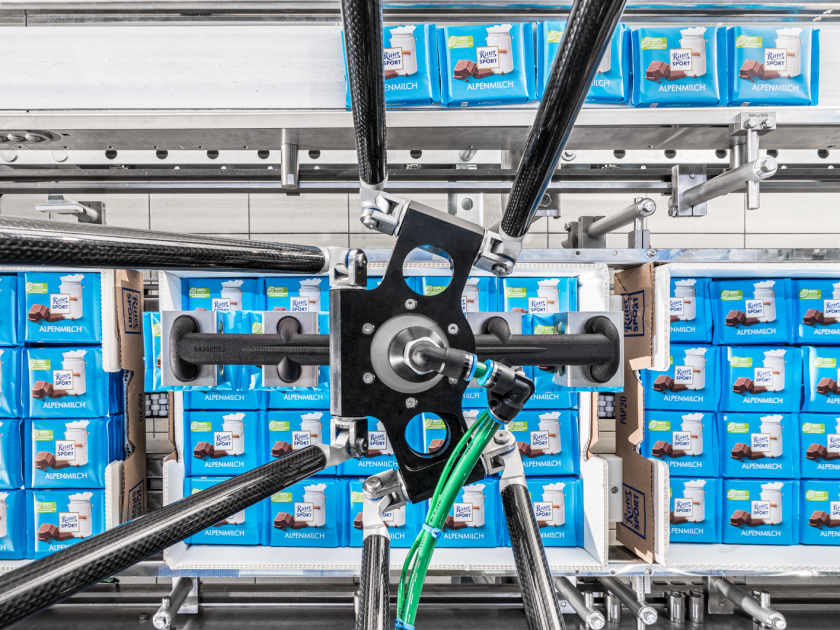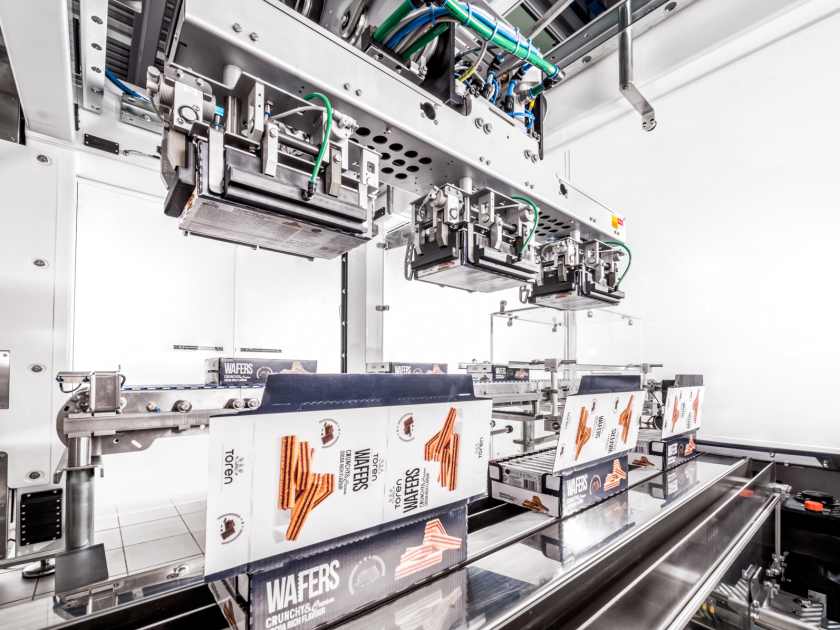Sweet Candy Company is a fifth-generation family-owned and operated American confectioner, based in the heart of Salt Lake City, Utah. The company, also famously called “Sweet’s”, distributes more than 250 quality candy items nationally and internationally in bulk, bags and boxes. Sweet’s is well known for its quality candy and world-class customer service.
Sweet’s turned to Schubert with the challenge to package one of their signature brands, their jelly filled chocolate sticks. Sweet Candy Company has been making this product for over 90 years and has gone through different alterations of its packaging. The confectioner’s demand was increasing for chocolate jelly sticks and they needed to increase the throughput of the line to be able to add on another shift to satisfy the new customers. The existing equipment was semi-automated, which required lots of human intervention and manipulation. In addition, it was only packing about 50% of the upstream product, the other 50% needed to packed by hand.
The confectioner needed a robotics based packaging system to handle the larger production volume that is also able to flexibly adjust the amount of products per box. At the same time, Sweet’s focused on high mechanical stability, outstanding customer service and training to enable easy machine system operation.

